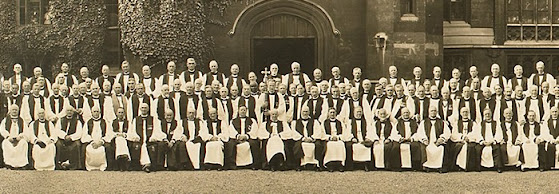Alloy (pronounced al-oi (noun) or uh-loi (verb))
(1) A
substance composed of two or more metals, or of a metal or metals with a
nonmetal, intimately mixed, as by fusion or electrodeposition.
(2) A
less costly metal mixed with a more valuable one.
(3) A standard;
quality; fineness.
(4) Admixture,
as of good with evil.
(5) To
mix (metals or metal with nonmetal) so as to form an alloy.
(6) To
reduce in value by an admixture of a less costly metal.
(7) To
debase, impair, or reduce by admixture; adulterate.
(8) A
slang term for aluminum, applied often to wheels made of the metal.
1590–1600: From the Middle French aloi (a mixture), from aloier (to combine) from the Old French alei, noun derivative of aleier (to combine) from the Latin alligāre (to bind up), the construct being al- (from the Latin adjective suffix -ālis) + ligāre (to bind) (from which English ultimately gained ligament). It replaced the earlier Middle English allay from the Anglo-French allai. An alloy is metallic substance made by mixing and fusing two or more metals, or a metal and a nonmetal, to obtain desirable qualities such as hardness, lightness, and strength. Brass, bronze, and steel are all alloys. Alloys often have physical properties markedly different from those of the pure metals.
Tube Alloys
Tube Alloys was the code name of the UK’s World War II atomic weapon programme. Work at Cambridge University during the 1930s had witnessed nuclear fission which underpinned the theory a nuclear chain reaction could be started, thereby making possible an atomic bomb. While the science remained mysterious to most, the term “atomic bomb” had been known since 1913 when HG Wells used it to describe a continuously-exploding bomb in his novel The World Set Free. The code name was chosen because it was vague enough to be associated with just about any engineering project.
Because the development of an atomic bomb demanded vast resources, Tube Alloys was later absorbed into the parallel US research; the trans-Atlantic effort picking up its code name from the project’s first headquarters in Manhattan, NYC. It was originally to be called Development of Substitute Materials but it was thought that might attract unwanted interest so Manhattan Engineer District was instead adopted. A bit of a mouthful, before long, it was known to all involved as the Manhattan Project.
Of alloys and aluminium
One
of the consequences of the ultimate success of the Tube Alloys project was the
form the British Land Rover (1948-2016) took.
The Manhattan project was top secret and until well into 1945 it wasn’t certain
either if the A-bomb was going to work or if it could be produced in volume as
a deliverable weapon. Accordingly,
military procurement plans continued on the assumption the war in the Far East
would continue perhaps until the end of 1946 meaning there were big orders in
the pipeline for war-planes, notably medium and heavy bombers, both requiring
much aluminium. The sudden end of the
war in August 1945 thus resulted in the cancellation of most of these orders
but because of the lead-times in industrial production, huge stocks of sheet
aluminium were in warehouses and elsewhere in the supply chain. After the war, the UK was not exactly
bankrupt but the economy was poor shape and there was much need to encourage
exports, the official mantra at the time “export or die” and it was no idle
treat; manufacturing concerns companies not orienting their production towards
exports would quickly find they were unable to secure raw materials and had to
either build for export or go out of business.
So
steel was in chronically short supply because of the need to re-build so much
of the infrastructure which had been damaged or destroyed, mostly by the
Luftwaffe’s gravity bombs and the later use of the V1 flying bombs and the big
V2 rockets but aluminium was plentiful.
Sheet aluminium was also light, not susceptible to rust and importantly,
could be folded into simple shapes, obviating the need for complex and tooling
to be built, an expensive and time consuming process. These qualities appealed to Rover’s engineers
who, while working on their modernist range of post-war passenger vehicles and
turbine engines, conjured up of the country’s most enduring exports, the
Land-Rover which in its original form would remain in production until outlawed
in 2016 by humorous European Union (EU) bureaucrats; it also in 1970 begat the
Range Rover which didn’t exactly create the niche of the civilized four wheel
drive (4WD) but certainly defined it.
Using a simple to build chassis and existing engines, the original Land
Rover was developed at remarkably low cost, something helped by most of the
external panels being fashioned from flat sheet aluminium, most requiring
nothing more than cutting and folding.
In
recent years, although more expensive than steel, aluminium remains an
attractive metal for manufacturers, attracted by its light weight and ease of
construction. Before the advent of
fibreglass and later more exotic composites, it was the material of choice for
many high-performance cars, some special low-volume runs of “alloy bodies” even
featuring in the production schedules of models constructed usually from
steel. Sometimes too there was a mix,
components like doors, hoods (bonnets) & trunk (boot) lids used to lighten
vehicles made substantially from steel, offering a significant weight-reduction
without the large cost of re-tooling for the entire platform. It was done not only to guarantee high-performance
but also to do something about low-performance.
After the second oil shock (1979), Mercedes-Benz rushed into production the
300 SD (1978-1980), a diesel version of the S Class (W116 1972-1980) sedan in
response to demand for diesel vehicles in North America. However, even after bolting a turbo-charger
to the (OM617) five cylinder 3.0 litre (183 cubic inch) engine, such was the
lack of power compared to the familiar petrol V8s that performance was hardly
stellar. Aerodynamic improvements would
have to wait for the replacement platform (W126 1979-1991) and the only
practical solution was weight reduction so the hood and truck lid were replace
with pressings using aluminium. That
helped but not by much and the acceleration offered by the 300 SD was never
described as anything but leisurely although the offset was the famously durable
OM617 would run for decades. Priorities
had however changed and the 300 SD became a best-seller in the US and was a
major factor in helping the company meet the Corporate Average Fuel Economy (CAFE)
standards, mandated in 1975, a reasonable achievement given the infamous thirst
of the V8s. In later years, lightweight
parts also proved attractive to owners of the 450 SEL 6.9 which used the 6.9
litre (417 cubic inch) (M100), the diet regime making the Teutonic hot rod
faster still.
Mercedes-Benz R230 construction (left) and Lindsay Lohan’s unfortunate SL 65.
Even in the age of carbon fibre and more modern alloys, aluminium remains widely used because it’s light, strong and it’s properties are well understood in manufacturing. The Mercedes-Benz R230 (SL, 2001-2011) used aluminium for components such as doors (the inner skins the even lighter magnesium), trunk lid and front fenders (wings) and alloys such as high-strength steel for the platform. Lindsay Lohan’s unfortunate low-speed event in a 2006 SL 65 afforded users an unusual view of the R230's construction via a gash torn in the aluminium door.



















